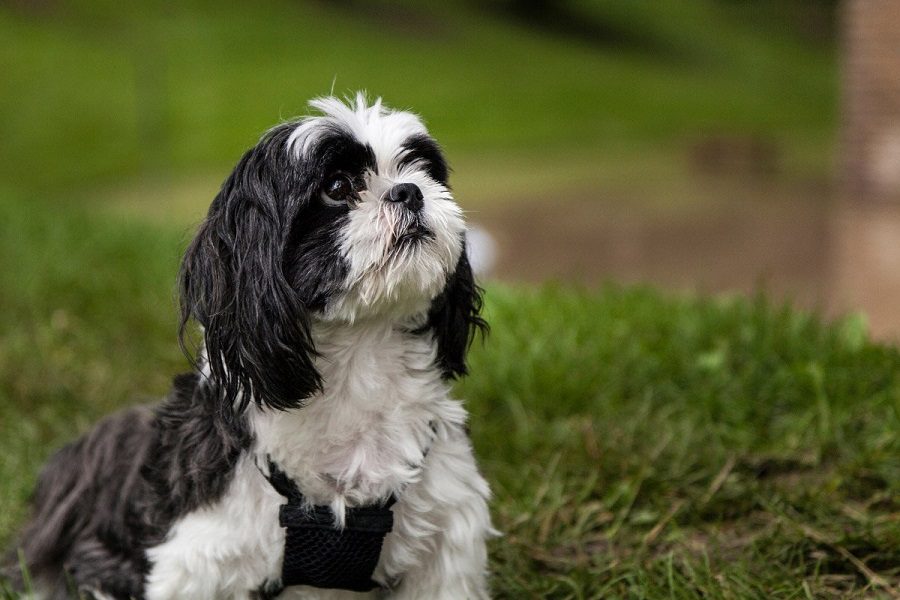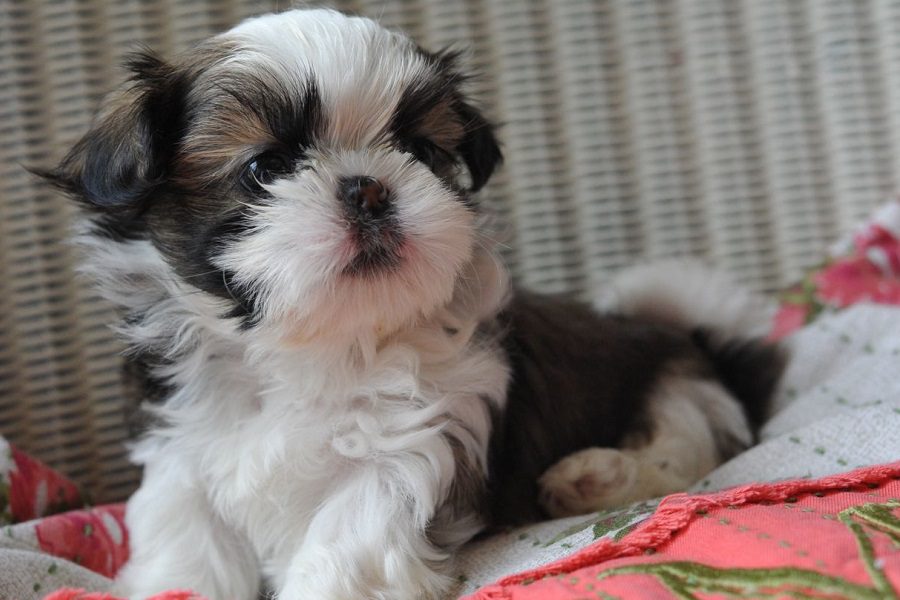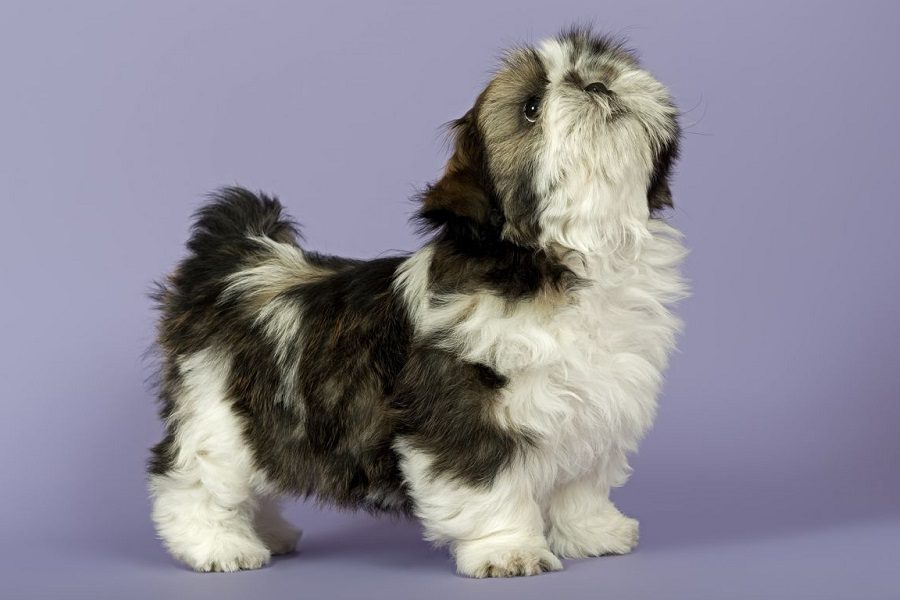Last Updated: 2 years ago
When you take your dog out for a walk, having full control over your pet is important, along with its comfort. But most of the owners prefer control over comfort. There are also lots of people who like to use collars for their pet dogs.
Collars may be great for both control and comfort, but harnesses provide the best of both.
The right harness for your dog instantly makes your walks more exciting and enjoyable. A small dog harness provides more control, relieves pressure on your dog’s throat, and reduces pulling. Dog harnesses are a great investment for any owner.
Here’s our complete shih tzu harness guide!
Your Complete Guide To Dog Harnesses
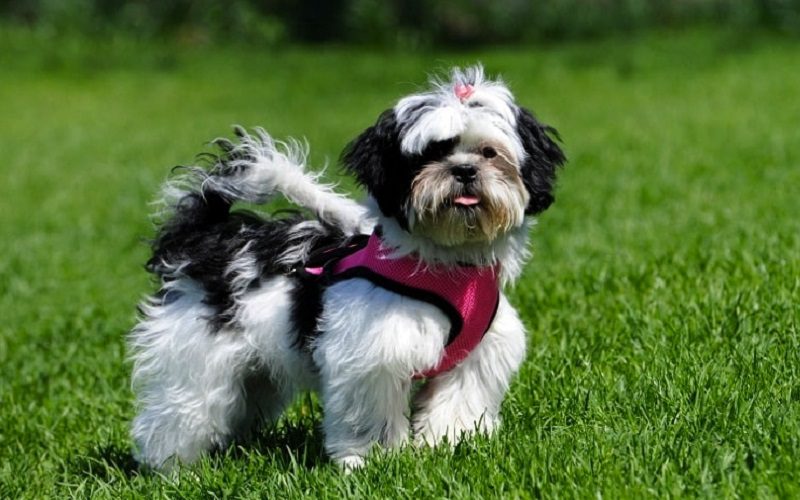
Are harnesses better than collars?
Using a harness rather than a collar makes it easier to manage and control your dog. Here are some of the advantages of having a harness.
- A harness is a great training tool for small pups who haven’t learned to walk properly. A harness prevents him from getting entangled in the leash and hurting in the process
- If you have a very strong or large dog, a harness gives you better control over a collar. It is easier for their back and arms
- Because harness provide better control, it are very handy in big crowds or busy streets
- Small dogs can easily get injured from tugging and pulling on the leash. A harness disburses pressure equally over a large area of their body. It reduces the strain from his back and neck
- When your dog stands after sitting or lying down for a while, the harness pulls him in a tender manner without causing him any kind of discomfort or pain
- Hardness discourages pulling. When your pet dog is wearing a collar and you pull him by the leash, he is moving forward. Your dog thinks that the pulling is effective. A harness, on the other hand, attached between his shoulder blades or on his chest, tends to redirect him. There is no reward because he didn’t get anywhere through pulling
- The harness works great for those mischievous little dogs that happen to be on the lead for a moment, and at the blink of an eye, they wriggle out of the collar
5 Types Of Dog Harness And How They Work
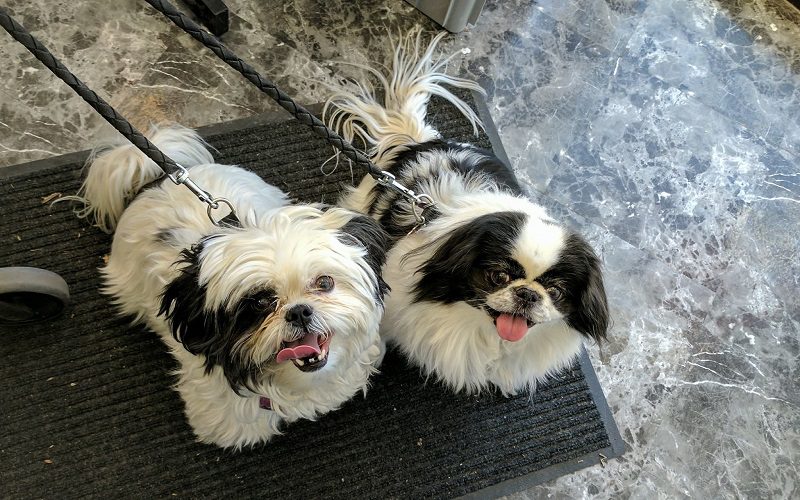
Here are five different types of dog harnesses:
1. The webbed harness: If your dog doesn’t have the habit of pulling, you can make use of the webbed harness for your dog. Remember that there is more than one brand that appears to be better. Hence, whatever you choose, make sure the harness is comfortable.
2. The vest harness: It is another type of harness and is suited for dogs that don’t pull. You may select an anti-pull harness if your dog is a puller. Vest harnesses comfortably fit like clothing. Many people prefer the vest harness over the webbed harness.
3. The front-clip harness: This type of harness works well for many dogs. Instead of experiencing a pull, your dog senses a kind of barrier when he tries to move forward. As such, it slows him down. The beauty of an anti-pull harness is that a large portion of dogs suddenly begin to walk nicely on the lead.
4. Harness with back and front clips: This configuration is comfortable and easy to use for most of the dogs. Because of the rear attachment, the leash is placed far away from your dog’s trachea. These are very useful little dog harnesses.
5. Head halter: If your dog is reactive on a leash or a strong puller, you may consider having a head halter. Most of this harness consists of a strap around your dog’s neck and another strap across the snout.
How to measure a dog for a harness
Once you have made up your mind to get your dog a harness, figuring out the right size for your pet dog will be the next thing. Dogs have different sizes and shapes. Different breeds, even dogs of the same breed, have different types of bodies.
Hence, it is very important to take a few measurements.
You can’t depend on the weight of the dog alone because it is quite natural that a 25-kg greyhound will have a different fitting as compared to a British Bulldog of the same weight.
Different harnesses will need different measurements for a proper fit for your dog. Here are some ways to measure using flexible cloth tape:
- Neck: Select the thickest portion of the dog’s neck right on the top part of their shoulders. Wrap the tape all over except for the narrow part where its collar will sit. Take the measurement.
- Chest: Measure all over the dog’s body, beginning from the widest part at the bottom of the ribcage behind the legs. Go up, around the back, and down again where you started.
- Weight: There are plenty of harness brands that use weight to determine the size. If your pet isn’t getting on the scales, try to weigh yourself first. Pick up your pet and stand on it together. Deduct one from the other to find out the real weight of your dog.
How to get your dog used to a harness
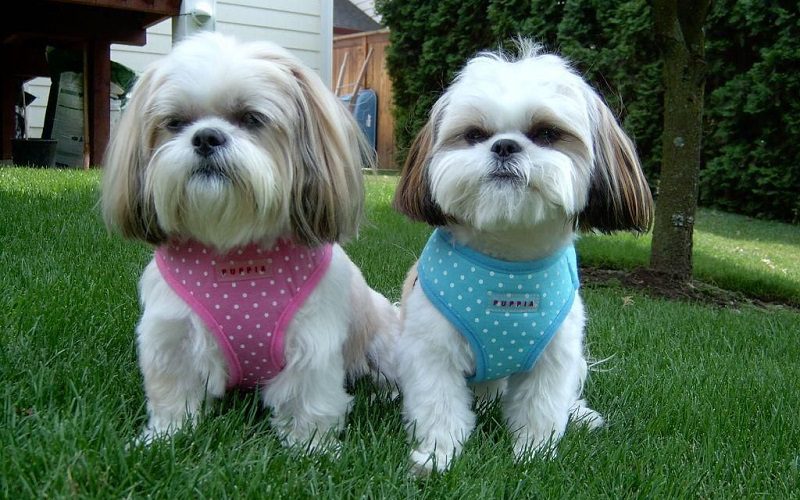
Dog owners can find a harness very overwhelming, but to your dog, it will be the scariest thing in the world. You will find it easy to get your dog to wear a head halter or a harness comfortably if you allow some time to introduce them to it.
Make it slow, and there is no need to rush things. If you try to put on the harness since the very first day and attempt to walk with it, it is most likely that your pet will try to get it off.
The situation may even get worse when they begin to dislike it. As such, it will be harder to make your dog change his opinion.
Teach your dog that using the harness will give them praise and reward them with treats. You can put the treat on the harness so that he can take it from there.
Allow your pet to smell the thing and get accustomed to it. Once they begin to like its appearance, try to get your dog to touch the harness.
Place the harness slowly, and reward them for every step while doing so. Most dogs don’t like wearing the harness as they have sensitivity issues in certain areas. Stroke the areas where the harness will touch the dog.
It can take several days for your dog to get comfortable with the harness. When your dog nips at you or backs away, it means you need to slow down.
How to put on a dog harness
Keep the unbuckled step-in harness on the ground. It should have a two-legged loop with straps running in the middle. Spread the straps of the harness so that your dog can easily fit into it. If the harness has a cover attached, ensure that it is outside and facing the ground.
Use the commands it’ and tay’ to make it easier for your dog to get into the harness. If these commands are unknown, another person will need to hold your dog. Then you can put the harness on him.
Prepare to place the front paws of your dog into the loops. Pick up both paws one by one and place them on their right loops.
Make sure the harness fits properly around the dog’s body. The loops will rest against its belly and at the top of the dog’s legs. The harness may have more than one clip to secure your dog. In that case, you should pull up one clip at a time and strap it properly.
The clips are secured when you hear a lick’ sound. Attach all the clips. Now it is time to adjust the harness. Adjust the movable pieces on the harness to secure your dog. Ensure that the straps won’t come off your dog.
To check if the harness isn’t tight, try to fit two fingers underneath the strap. Reward your dog with a treat, and it will be easier to put on the harness the next time.
How to make sure a dog harness fits properly
There are different kinds of harnesses for dogs, and each of them has a different fit and style. As a rule of thumb, the harness should fit comfortably but not very tight.
However, it should be tight enough so that your dog can’t take it off. The clip, where the leash is to be attached, should be placed high on the chest.
Check that you are able to fit your two fingers between your dog and the harness. A loosely fitted harness would make your pet very uncomfortable. At the same time, it will also make the training sessions much harder. Here are some signs that show poor-fitting harnesses.
- The strap loosens as they walk
- They can wiggle or step out of it
- They are losing fur in the harness area
- The back piece is rotating sideways
If your dog doesn’t want to walk around or is showing some type of discomfort after putting on the harness, it is sure that the harness isn’t fitting well. If the harness is too tight or small, your pet won’t be able to make movements freely.
In an attempt to make themselves free from the harness, your pet uses the muscle incorrectly, causing stress to the bones and joints. A loosely fit harness is a safety issue for your dog, who can break free and cause medical problems.
What size harness does my dog need?
Harnesses that properly fit around a dog’s front chest and behind their front legs are better. That’s because they provide control and put uniform pressure on the dog’s body. They need to fit well so that they don’t cause any discomfort.
The first step is to find the exact measurement of your dog with the help of a measuring tape.
When you combine your dog’s weight and the body measurement in centimeters or inches, you can find the best harness that will suit your pet. Measure the broadest part of the dog’s chest.
Don’t measure it too tightly; take notice that it is comfortable. Note down the measurement because it will help you figure out the harness size.
Now it’s time for you to buy the harness. First of all, select a harness that is about 2 inches wider than the measurement you took. Then you need to check out the weight range. If the weight of your pet coincides with that of the weight range, then it is perfect.
If your pet dog falls between sizes, always select the bigger size. That’s because you can adjust it to fit tighter, but if the harness is too small, you can’t use it.
How do you put a clip on a dog’s front harness?
A dog’s front harness comprises a leash clip over the dog’s chest in the front part. It is designed to discourage pulling. There are some front clips that are shaped like the step-in harness.
If you have those types of harnesses, follow the steps for putting them on your dog. However, there are some front-clip harnesses that have different designs. They have a single loop that goes around your dog’s ribs and another one that goes across their chest.
There is no divider between their legs. When you have this type of harness, you need to follow the below-mentioned steps.
- Place yourself to the right side of your pet while he is calm
- Put the harness over your dog’s neck
- Adjust the harness so that the metal clip is placed at the center of the dog’s chest and the connector rings lay above the dog’s shoulder
- Fasten the long strap underneath the pet’s belly
- Make the necessary adjustments to fit the harness on your pet dog. Ensure that it can’t be pulled over his head
There are some harnesses that can be difficult to figure out, whereas there are some that are easy to handle. But the most important thing is to ensure that the harness is comfortable and not too tight for your pet companion.
Collapsing Trachea
Collapsing Trachea is a health condition found in small dogs, such as Shih Tzus.
The trachea, also known as the windpipe in your dog, is composed of cartilage.
As cartilage weakens, the structure starts to flatten, and breathing becomes more difficult and painful for your little dog.
This condition can be rectified with surgery if it really is serious, but in most cases, your dog will adjust to that condition.
What is a no pull harness?
If you have a pet who pulls frequently on a leash, it can make you irritated. To make your worry less, no-pull harnesses can help you reduce and eliminate the pulling behaviors of your dog. In general, harnesses are a great thing while walking with your dog.
There are a few reasons for this. A harness takes the strain off your dog’s neck and gives you much more control while walking with your pet. And if you have a pet dog that likes to pull on the leash, a no-pull or anti-pull harness is the perfect lifesaver.
It is extremely important for owners who have to face trouble while controlling their pets. A no-pull harness helps to regulate your pet’s pulling behavior. Thus, it allows you and your pet to walk with less stress.
There are certain varieties of no-pull harnesses available on the market, and you can buy according to your specific needs. These harnesses have straps that lay above the pup’s shoulders.
It can be fastened by a clip at the center of their chest behind their front legs. The no-pull harness will have a clip right in front of the lease. While walking, your pet has to stay beside you to keep moving forward.
When your dog pulls, the lease connected to the front ring will move towards the side instead of going back. As such, it directs your pet beside you once more. Hence, the ability to control your dog rises by applying a small pressure.
What age can a dog wear a harness?
Almost every dog will happily accept the harness, except for a few. In fact, you can teach puppies to wear a harness from day one itself. That’s because you will get your pet at about 8 weeks from its birth. Allow a few days to settle into the new environment before starting with the new regime.
Harnesses should be worn while doing light exercise or during walks. Make sure that the harness is not tight and that your dog is feeling comfortable. Harnesses save your dog from several injuries that may arise because of constant pulling, yanking, and fighting the leash.
Do harnesses hurt dogs?
The benefits and risks associated with using a harness depend greatly on its type, your pet’s breed, the level of activity, and the proper use of the device. When the harness isn’t fitted well or your dog tends to pull hard on the leash, there are chances of a potential chest injury.
Front-clip harnesses for short dogs put more pressure on the throat region and cause tracheal issues. A front-hook harness can affect your dog’s gait and obstruct shoulder movement.
The head halter presents a unique kind of problem because very few dogs seem to adjust it. Sleeping with a harness is very risky because there could be a choking hazard.
Conclusion
Different kinds of dogs will need harnesses, and there are plenty of them. So, it will take some time for you to choose the right one.
When you find the perfect ones for your pet, both of you can walk around to explore the smells and sights of the street, parks, and many other things.
Resources:

